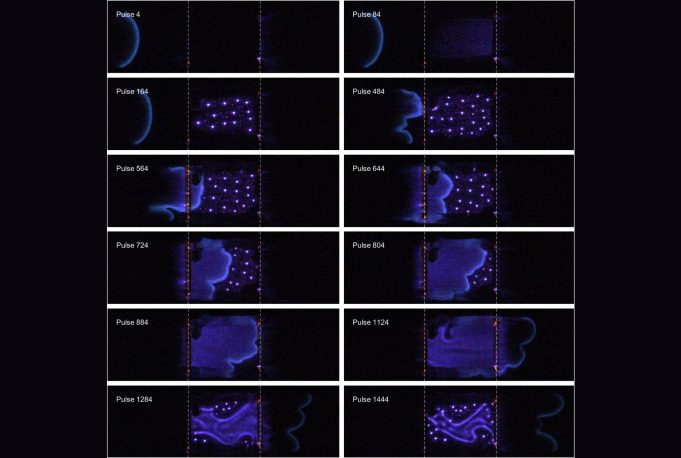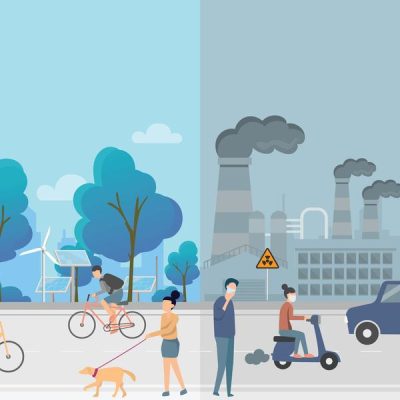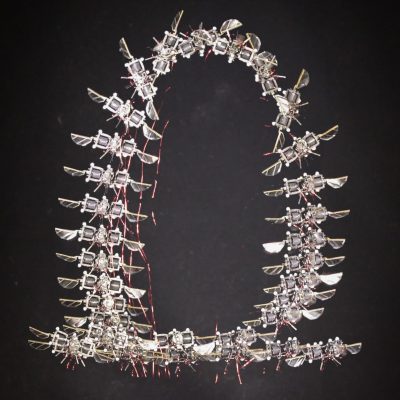
Laminar flame speed modification by nanosecond repetitively pulsed discharges, Part I & II
Aerospace Plasma Group researcher Colin Pavan and Professor Carmen Guerra-Garcia present a two-part paper showing how nanosecond plasma pulses can speed up or disrupt flames. Their study is the first to compare different plasma strategies for changing flame speed and explains the key effects: radical generation, heating, and pressure waves. The results improve understanding of plasma-assisted combustion and can guide more efficient system design.
Authors: Colin Pavan and Carmen Guerra-Garcia
Citation: Combustion and Flame, October 2025, Part I and Part II
Part I: Numerical model
Plasma-assisted combustion (PAC) offers significant potential to enhance combustion processes by modifying thermal, kinetic, and transport properties. Despite progress in the field, challenges remain in reconciling disparate experimental results and understanding the mechanisms of plasma-flame interaction. This work develops a numerical modeling framework to systematically evaluate the impact of Nanosecond Repetitively Pulsed Discharges (NRPDs) on PAC systems. The focus of this contribution is modeling laminar premixed flames; and the main metric to assess the impact of plasma on flame is the laminar flame speed. The model is exercised on a stoichiometric methane/air flame. A combined 0D plasma-combustion model, PlasmaChem, is presented, enabling accurate energy tracking and coupling of detailed plasma and combustion mechanisms. The model is extended to 1D to incorporate compressible fluid dynamics, capturing the interaction between plasma and flame propagation. The results reveal distinct phases of plasma-flame interaction, demonstrating both beneficial effects, such as increased laminar flame speed due to radical production, and adverse effects, including flame deceleration from pressure disturbances. The model is compared to experiments in an accompanying paper, Part II of this work.
Part II: Experiments
This paper systematically evaluates how, and to what extent, nanosecond repetitively pulsed (NRP) discharges modify the laminar flame speed of methane–air mixtures at ambient conditions, using both experiments in a narrow-channel quartz burner and a one-dimensional plasma-combustion model described in an accompanying paper (Part I). By varying the discharge location relative to the flame, four actuation strategies were explored at variable pulse repetition frequency: (i) discharges far ahead of the flame, (ii) pre-treatment of fresh reactants, (iii) direct (insitu) plasma–flame overlap, and (iv) a combination of pre-treatment and insitu interaction. Results show that acoustic waves produced by upstream discharges can reduce flame speed by as much as 30%–40%; while partially overlapping the discharge with the flame significantly accelerates it, with measured enhancements of up to 50% in both model and experiment. Flame speed modification by plasma increased with pulse repetition frequency, so that the envelope of performance enhancement reported here is limited by the highest frequencies tested (8kHz). The model captures these trends by attributing the detrimental effects to pressure-wave disturbances and the beneficial effects to radical-seeding and mild heat addition in, and close to, the reaction zone. These observations may help shed light on previously reported experiments and are here presented in a unified manner by focusing on a fundamental combustion metric (laminar flame speed), to give generality to the results obtained in laminar flames. The results demonstrate how spatio-temporal positioning of the discharge governs whether plasma aids or hinders the flame, ultimately guiding the design of optimal plasma-assisted combustion strategies.

